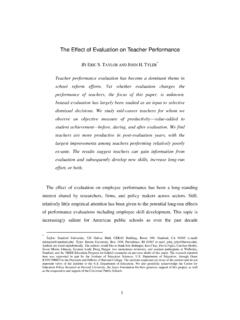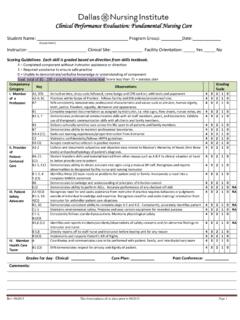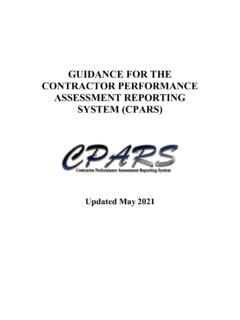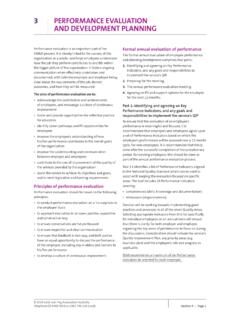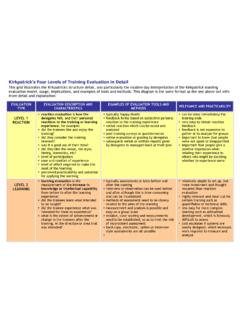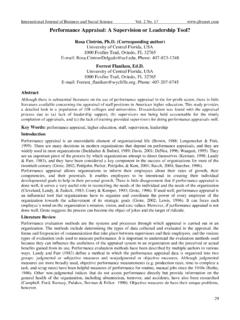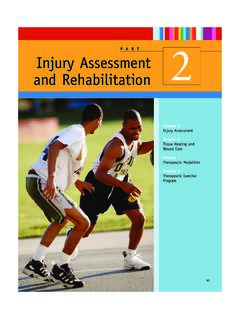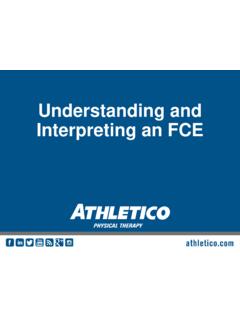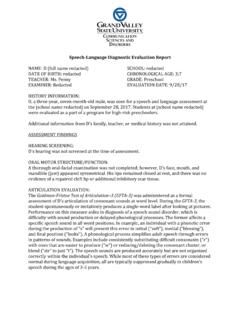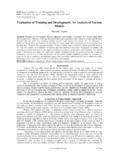Transcription of Home Assessments for Falls Prevention
1 Home Assessments for Falls Prevention 1 2017. National Council on Aging and USC Leonard Davis School of Gerontology. All Rights Reserved. Unauthorized use to Get ItLiteratureSummaryTarget Assessor and AudienceComprehensive Assessment and Solution Process for Aging Residents (CASPAR)Extended Home Living Services (EHLS) Wheeling, Illinois 1. Sanford, JA, Butterfield, T. (2005). Using Remote Assessment to Provide Home Modification Services to Underserved Elders. The Gerontologist, 45(3): 389-398. 2.
2 Pynoos, J., Sanford, J., and Rosenfelt,T. A Team Approach for Home Modifications. OT Practice, April 8, (2002), 15-19. EHLS recieved two Small Business Innovation Grants from the National Institute on Aging to develop the Comprehensive Assessment and Solution Process for Aging Residents (CASPAR). CASPAR enables practitioners to identify a client s aging in place needs by collecting information that can be used by building professionals and occupational therapists to specify the right modifications. This assessment considers the home environment, the resident's abilities and preferences, and the interaction between the two, combining the specific concerns of consumers, building professionals, and occupational therapists in performing home modifications Assessments .
3 Assessors: professionals ( , aging service providers, building professionals, occupational therapists, physical therapists, care mgrs, social workers). Audience: Aging persons living in a home Assessment Protocol (C-CAP)Laura N. Gitlin, Johns Hopkins University School of Nursing, Baltimore, MDContact the author: Laura N. Gitlin, Johns Hopkins University School of Nursing, Baltimore, MD1. Gitlin L. N., Corcoran M. (2000). Client-Clinician Assessment Protocol (C-CAP). Philadelphia: Thomas Jefferson University. 2.
4 Petersson I, Fisher AG, Hemmingsson H, et al. The client-clinician assessment protocol (C-CAP): Evaluation of it's psychometric properties for use with people aging with disabilities in need of home modifications. OTJR: Occupation, Participation and Health 2007;27:140 148. 3. Szanton SL, Thorpe RJ, Boyd C, Tanner EK, Leff B, Agree E, Xue QX, Allen JK, Seplaki CL, Weiss CO, Guralnik JM, and Gitlin LN. Community Aging in Place, Advancing Better Living for Elders (CAPABLE): A Bio-Behavioral-Environmental Intervention to Improve Function and Health-Related Quality of Life in Disabled, Older Adults.
5 J Am Geriatr Soc. 2011 Dec; 59(12): 2314 2320. The C-CAP focuses on clients self-reported perceptions of their abilities in daily life - their independence, difficulty, and safety in conducting activities in their home environment and the community (Gitlin & Corcoran, 2000). This self-report is combined with collaborative observation by an occupational therapist on 22 functional items as well as an assessment of the home environment (Szanton, et al. 2011). Assessors: Occupational therapists along with the individual.
6 Audience: People who are aging with Behavioral Scale (FaB)Lindy Clemson, Robert G. Cumming, & Robert Heard, The University of Sydney, School of Occupation and Leisure Sciences, Australia 1. Clemson, L., Cumming, , & Heard, R. (2003). The development of an assessment to evaluate behavioral factors associated with falling. AmericanJournal of Occupational Therapy, 57(4), 380-388. 2. Clemson, L., Bundy, , Cumming, , Kay, L., & Luckett, T. (2008).Validating the Falls behavioural (FaB) scale for older people: A Rasch analysis.
7 Disability & Rehabilitation, 30(7), FaB evaluates behavioral factors that could potentially protect against falling. It includes 30 items within 10 behavioral dimensions related to Falls : cognitive adaptations, protective mobility, avoidance, awareness, pace, practical strategies, displacing activities, being observant, changes in level, and getting to the phone. According to the instruction manual, it takes 5-10 minutes to complete, and has also been found useful as: a) An assessment in clinical practice. It can give a profile of the range of strategies people are using; b) A goal setting tool; c) A prompt to discuss behavioral factors and Falls and as an aide in reflective learning; and d) A way of raising awareness of the broader focus of the therapist visit.
8 Assessors: Occupational therapists and other professionals. It can be self-administered by the older person, administered by interview, or sent by mail to the person prior to a home visit. Audience: older adults living at Home Environment Assessment Protocol-Revised (HEAP-R)Laura N. Gitlin, Johns Hopkins University School of Nursing, Baltimore, MDContact the author: Laura N. Gitlin, Johns Hopkins University School of Nursing, Baltimore, MD1. Gitlin LN, Schinfeld S, Winter L, Corcoran M, Boyce AA, & Hauck W.
9 Evaluating home environments of persons with dementia: interrater reliability and validity of the Home Environmental Assessment Protocol (HEAP). Disability and Rehabilitation 2002; 24(1-3): 59-71. This home-based environmental assessment uses self-reporting and observation to help family caregivers of persons with dementia learn through education, skill-building, and environmental strategies. Domains assessed include hazards, adaptations, visual cues, clutter, and comfort in eight areas of the home. Assessors: Clinicians. Audience: Persons with dementia and their family caregivers.
10 Home FAST (see copyright information): Home FAST (see copyright information): TOOLS FOR USE BY PROFESSIONALSHome Falls and Accidents Screening Tool (Home FAST) and Non-OT Home Falls and Accidents Screening Tool (Home FAST)Lynette Mackenzie, University of Sydney, Discipline of Occupational Therapy; Julie Byles, University of Newcastle, Discipline of Public Health, and Nick Higginbotham, University of New Castle, School of Medicine and Public Health, Australia1. Mackenzie, L.
